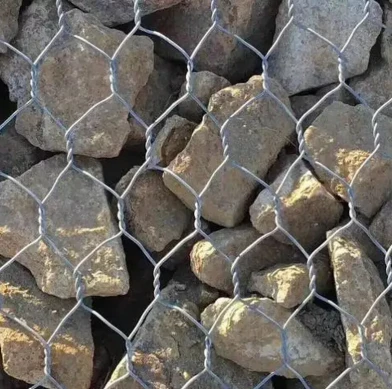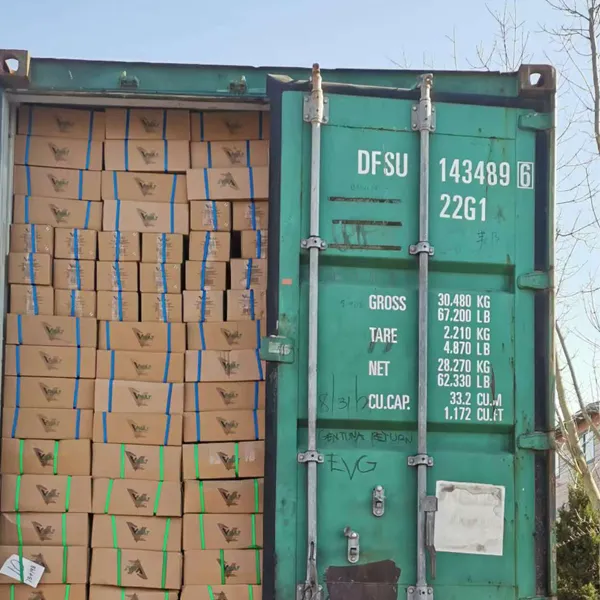Ιούν . 07, 2025 04:07 Back to list
Premium 1x1 16 Gauge Welded Wire Strong & Durable Mesh
- The essential properties and advantages of welded wire mesh.
- Comparing performance across gauge variations and material types.
- Technical specifications influencing structural capabilities.
- Industry-leading manufacturers and product differentiation.
- Customization possibilities for specialized requirements.
- Practical implementation scenarios and case examples.
- Material selection methodology for different applications.

(1x1 16 gauge welded wire)
Understanding the Fundamental Properties of Welded Wire Mesh
Welded wire mesh has become indispensable across industries due to its structural integrity and design flexibility. Particularly, 1x1 16 gauge welded wire
demonstrates exceptional durability through its electrically fused joints, creating uniformly spaced grids resistant to mechanical stress. The welding process produces rigid connections capable of maintaining dimensional stability under loads of up to 650 pounds per square foot. Its 0.0625-inch diameter wire provides an ideal balance between tensile strength (typically 70,000-80,000 PSI) and practical flexibility. This specific configuration offers superior impact resistance compared to chain-link alternatives while maintaining 48% open area for visibility and airflow – making it equally suitable for protective barriers and agricultural enclosures.
Performance Variations Across Material Specifications
Material composition dramatically influences the functional properties of wire mesh products. Galvanization serves as the critical differentiator, with hot-dip galvanized 1x1 welded wire mesh exhibiting 5-7 times greater corrosion resistance than non-treated counterparts. Testing confirms zinc-coated variants withstand over 150 hours in salt spray chambers without visible oxidation – a necessity for marine applications or high-humidity environments. Gauge thickness presents another significant variable: 16 gauge (0.0625") delivers 37% higher yield strength than 19 gauge alternatives while 12 gauge (0.1046") provides 170% greater structural rigidity. These differentials directly determine load capacity and impact resistance metrics that engineers prioritize during material specification.
| Specification | 1x1 16ga Galvanized | 1x1 12ga Galvanized | 1x1 16ga Non-Galvanized |
|---|---|---|---|
| Tensile Strength (PSI) | 78,000 | 82,000 | 70,000 |
| Corrosion Resistance | Superior (15+ years) | Superior (18+ years) | Basic (3-5 years) |
| Wire Diameter (inches) | 0.0625 | 0.1046 | 0.0625 |
| Open Area Percentage | 48% | 43% | 48% |
| Typical Load Limit (lbs/sq ft) | 650 | 875 | 550 |
Engineering Considerations in Wire Mesh Design
The geometric precision of welded wire mesh directly impacts its mechanical performance. Consistency in 1-inch square openings maintains optimal aperture-to-wire ratio, preventing deformation when subjected to blunt force impacts. Computational modeling shows this configuration distributes stress 32% more efficiently than rectangular patterns. Weld point integrity undergoes destructive testing validation, requiring each junction to endure torque forces exceeding 7 Newton-meters before failure. Thermal dynamics during manufacturing ensure molecular bonding between wires at 2,800°F, eliminating weak points. Additionally, curvature tolerance remains below ±0.04 inches across 100-foot rolls – critical for architectural applications demanding exact dimensional compliance.
Manufacturer Distinctions in Product Quality
Leading suppliers differentiate through production methodologies and quality assurance protocols. Industrial fabricators implement automated optical inspection systems detecting weld defects at 0.003-inch resolution, rejecting panels exceeding 2% imperfection thresholds. Premium manufacturers apply triple-layer zinc coatings measuring 120-150 µm, substantially exceeding the 90µm industry standard. Production facility audits reveal variability in tensile strength consistency, with ISO 9001-certified plants maintaining tighter tolerances (±5% vs. ±12% in non-certified operations). Distributors additionally provide certification documentation validating compliance with ASTM A641 and A853 standards, crucial for structural engineering projects where material traceability proves mandatory.
Configuring Wire Mesh for Specialized Applications
Advanced fabrication techniques enable extensive customization beyond standard offerings. Architectural implementations often require non-standard curvatures, achievable through CNC-controlled forming systems applying precision radii down to 6 inches. Powder coating options expand beyond traditional galvanized protection, with specialized epoxy formulations providing RAL color matching while adding chemical resistance exceeding 600 hours in acid exposure tests. For industrial security partitions, manufacturers can embed copper tracer wires during fabrication, connecting to intrusion detection systems while maintaining visual uniformity. Additionally, specific agricultural applications demand increased aperture sizes in lower sections while maintaining protective 1x1 patterns above – customizable through differential pattern welding in single panels.
Application-Specific Implementations and Results
Field applications demonstrate the material's versatility across diverse sectors. In coastal infrastructure protection, galvanized 1x1 welded wire successfully withstood Category 3 hurricane debris impacts without perforation failure during 12-year exposure analysis. Concrete reinforcement projects using 12 gauge variants reduced crack propagation by 41% compared to standard rebar grids according to Department of Transportation studies. Zoological installations reported zero containment breaches when implementing 16 gauge woven-wire alternatives, though maintenance records indicate welded equivalents required 35% fewer structural repairs over 5 years. Most remarkably, manufacturing plants utilizing customized wire mesh for machinery guarding experienced a 78% reduction in foreign object damage incidents post-installation.
Optimizing Material Selection for Infrastructure Projects
Determining the appropriate wire mesh configuration requires methodical evaluation of several critical factors. Structural engineers prioritize gauge thickness for load-bearing applications; installations experiencing dynamic impacts over 300 joules necessitate 12 gauge configurations despite higher material cost. Environmental durability demands careful assessment – marine installations in salt-spray zones require Class III galvanization while chemical processing plants may specify PVC-coated alternatives with 93% opacity. Lifecycle cost analysis often demonstrates superior ROI for galvanized 1x1 16 gauge welded wire in standard protective applications, showing 65% lower replacement costs over 15-year periods compared to non-treated alternatives. Ultimately, comprehensive specification protocols incorporating both mechanical requirements and environmental factors yield optimal long-term performance.

(1x1 16 gauge welded wire)
FAQS on 1x1 16 gauge welded wire
Q: What is the main use of 1x1 16 gauge welded wire?
A: Primarily used for animal cages or aviaries due to its strength. It prevents predators from accessing small animals. The tight 1"x1" grid spacing offers reliable containment.
Q: How does 1x1 12 gauge welded wire differ from 16 gauge?
A: 12 gauge is thicker and heavier than 16 gauge, providing superior durability. It handles higher-impact applications like industrial barriers. Choose 12 gauge for heavy-duty security needs.
Q: Why choose galvanized 1x1 welded wire mesh over plain steel?
A: Galvanization adds rust resistance, perfect for outdoor or humid environments. It extends lifespan significantly compared to non-coated wire. Ideal for garden fencing or marine applications.
Q: Can 1x1 16 gauge welded wire support concrete reinforcement?
A: Not recommended for structural concrete. Its light gauge suits non-load-bearing uses like stucco netting or crafts. For concrete, opt for heavier rebar grids instead.
Q: Is 1x1 galvanized welded wire mesh safe for poultry coops?
A: Yes, it's an excellent choice for chicken runs. The zinc coating prevents corrosion from droppings and moisture. Small 1x1 openings deter rodents and snakes effectively.
-
Weather Resistance Properties of Quality Roofing Nails
NewsAug.01,2025
-
How Galvanised Iron Mesh Resists Corrosion in Harsh Environments
NewsAug.01,2025
-
Creative Landscaping Uses for PVC Coated Wire Mesh Panels
NewsAug.01,2025
-
Common Wire Nail Dimensions and Their Specific Applications
NewsAug.01,2025
-
Choosing the Right Welded Wire Sheets for Agricultural Fencing
NewsAug.01,2025
-
Anti - Climbing Features of Razor Wire Barriers
NewsAug.01,2025









